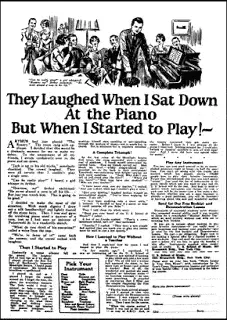Social media platforms like Facebook, Instagram and LinkedIn have been with us for a fair amount of time now.
With the rise of social media came an explosive growth in social media marketing and advertising.
You’re never going to escape advertising, but if we are going to expose our target audience to social media ads we may as well expose them to good ads that are both effective, and entertaining.
Not the painful, traditional kind where you’re just being sold to.
Utilise storytelling to dress up your advertising.
A Practical Example of Story Telling to Sell a Car
In an episode of the 1990’s hit comedy, Fresh Prince of Belair, Will Smith visits a car dealer with his Uncle Phil and his cousin Carlton to look for a new car.
“Now look Uncle Phil”, says Smith in his smooth style, “We don’t need nothing too fancy. As long as it got vibrating bucket seats, a refrigerated glove compartment, and a license plate that says ggrrrr (makes sound of a lion growling)”.
But before he has had a chance to finish, Uncle Phil interrupts, “Will this car is for basic transportation, not your indulgences”.
Before long Carlton and Uncle Phil spot what looks like a rather modest car and start checking it out. Eventually the salesman approaches and tells them he would be with them in a second, to which Uncle Phil replies “Thank you, I think we’ve found what we’re looking for”.
Hearing those words, Smith comes rushing in. “Hey hey hey, whoaa, Uncle Phil you not seriously considering making me drive this Carlton mobile are you?”
Uncle Phil, disappointed by Will’s unappreciative nature, goes off on one of his ‘back in my day’ rants.
“Son when I was in college, I drove a manure brown 65 Dodge dark”, says Uncle Phil.
“So why you taking it out on me?” half-jokingly replies Smith, which makes Uncle Phil laugh and lightens his mood.
“What a piece of junk. Tow trucks used to follow me around like vultures”, chuckles Uncle Phil as he further reminisces of his college days.
Will suddenly realizes that the way to get Uncle Phil to buy the hot coupe is to show him how the hot new coupe can make him re-live his college days, only this time with all the things he did not have during college.
“Check this out Uncle Phil”, says Smith as he gently ushers him towards another car and opens the door for him. “You like that huh? mhmm?” Uncle Phil chuckles in agreement as he takes a seat behind the wheel.
Then Smith uses the all time classic sales technique of ‘Imagine this’ to get his uncle to imagine what it would be like to own the car.
“There you are uncle phil. 25 years younger. Thousands of pounds thinner. Cruising the strip at Princeton”. Uncle Phil nods in agreement as he goes off into the world of imagination.
“Wind blowing through your big old fro”.
Uncle Phil gasps with air, as to pretend like a gush of air just blew through his big afro.
“Hunnies checking you out. They saying, ‘um there goes Philip Banks, he’s a bad man. They waiving at you uncle Phil. Go ahead, go ahead, wave back, its okay wave back.” Uncle Phil gets all giddy and raises his fist and yells out “ride on sister”.
As Smith continues his ‘imagine this’ sales pitch, Carlton, Will’s cousin, interrupts.
“Dad, did I mention that the all new Accouna gives 75 miles per gallon?”
But it is too late, by now Uncle Phil is already sold on the hot new coupe.
“The hell with the Accouna”, replies Uncle Phil, “I want this”.
The Point of the Story
What the story above demonstrates is the power of painting pictures in your customers’ minds. It shows how visual imagination can make a customer experience what it would be like to buy and enjoy your product or service. After all, everyone knows that people buy emotionally, not rationally.
And vivid images are one of the most powerful ways to evoke emotion in a customer.
Painting pictures in the mind of a customer triggers what psychologists call pre-feelings. Pre-feelings are projections of how you might feel in a given future situation. They allow us to simulate a given experience without having to physically experience it.
A Simple Experiment to Demonstrate the Power of Pictures
Do not buy it? Then take a moment to picture a child running with a pair of scissors in hand. How about a teacher standing in front of a classroom screeching her nails across the blackboard? Feel a shiver go up your spine? Of course you did. It is your empathy systems firing, allowing you to simulate not only the visual but the emotional state of the situation.
The Problem with ‘Imagine This’
The only problem is, asking customers to ‘imagine this…’ sounds cheesy at best and sleazy at worst. It’s too clichéd, too overt, and comes across as too much of a hard sell. How then can you use the power of ‘imagine this’ without resorting to ‘imagine this’?
By telling your customers a story.
Selling with Stories
When we hear or read a story, we do not just hear or read it, we experience it emotionally. We feel what the characters are feeling and sense what they are sensing. Basically, we put ourselves in their shoes. It is part of what it means to be human. It is the circuitry that allows us to relate and interact with people around us.
Consider the experiment by a team of psychologists at Washington University, USA. The researchers hooked up participants to a brain scanner and asked them to read four short passages from a book. They wanted to see what was going on inside the participants’ brains as they read the story. They hypothesized that different neuron clusters would fire depending on the nature of the passage.
Sure enough, that is what they found. When the participants read passages involving interacting with objects, like clutching the grips of a motorcycle, they found motor neurons fired to simulate the interaction. When reading a passage involving emotions and intentions, another cluster of neurons fired to simulate the emotional state of the story.
Thus, despite conventional wisdom, stories are anything but passive; our brains translate them into virtual experiences, triggering real emotion.
How One of the Greatest Ads of All Time Used the Power of Story to Get Customers to ‘Imagine this’
One of the greatest examples of the use of story in getting customers to imagine a situation is the classic piano-lessons-by-correspondence ad by the famous copywriter John Caples. Caples wanted his prospects to feel the thrill of what it would be like to become a great piano player, of the joys it would bring, and the sense of social and personal success it would endow upon them.
Now, he could have simply said ‘imagine this…’, but how many people do you think would have even read the hard sell ad, let alone actually been able to properly experience the emotion that he wanted to convey and elicit.
So he decided to tell them a story instead.

The headline starts off:
‘They All Laughed When I Sat Down At The Piano – But When I Started To Play!’
This immediately captures the audience’s attention and draws them into the ad. After all, who cannot relate to being in a socially uncomfortable situation and having their friends laugh at them?
Then comes the body of the ad:
‘Arthur had just played The Rosary. The room rang with applause. I decided that this would be a dramatic moment for me to make my debut. To the amazement of all my friends, I strode confidently over to the piano and sat down’. You can feel a sense of pressure, a sense of putting yourself on the line, but at the same time of feeling confident because you know something that the others do not.
“Jack is up to his old tricks,” somebody chuckled. The crowd laughed. They were all certain that I couldn’t play a single note.
“Can he really play?” I heard a girl whisper to Arthur.
“Heavens, no!” Arthur exclaimed “He never played a note in all his life… But just you watch him. This is going to be good.”
I decided to make the most of the situation. With mock dignity I drew out a silk handkerchief and lightly dusted off the piano keys. Then I rose and gave the revolving piano stool a quarter of a turn, just as I had seen an imitator of Paderewski do in a vaudeville sketch.
Now if you were to put a person in a FMRI machine and ask them to read the last little bit (not out loud, just in their head), what you will find is that, like the participants in the experiment discussed above, different neuron clusters would fire depending on the demands of the narrative.
For example, when the protagonist took out his handkerchief and, with mock dignity, lightly dusted off the piano keys, the motor neurons would fire to emulate the physical action of taking out the handkerchief and dusting the piano.
But other neuron clusters would also fire allowing the reader to comprehend the intention and emotional significance of the act. Together the different neurons would allow the reader to not only see the action taking place in their mind but also feel the emotion of the situation in their body. And that is the power of story, to not only paint a vivid visual image but also evoke a visceral emotional state.
The Take Home Lesson
The take home lesson then is this: if you don not want to come across as a sleazy salesperson by using ‘imagine this’ but still want to stir emotion, try telling your customers a story instead.
Stories involve us at a very visceral level and thus allow you to evoke the emotion so vital in creating and magnifying desire for your products or services.

